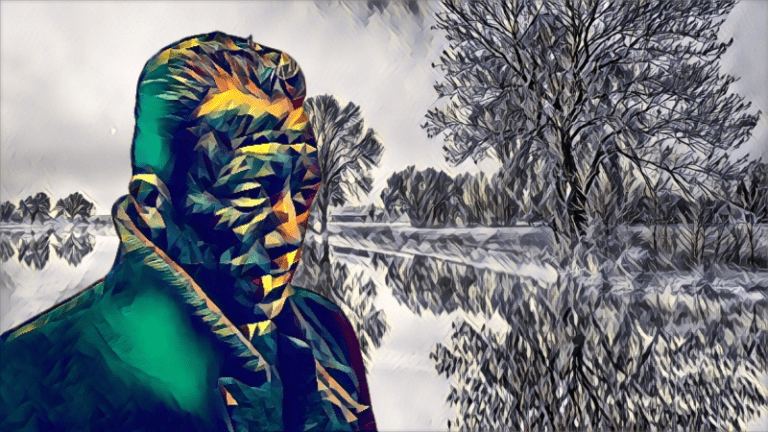The importance of opposites and change: Daoism, Buddhism and Heraclitus in comparison
The ancient Greek philosopher Heraclitus and Daoism, a philosophical and religious tradition originating in ancient China, have remarkable philosophical parallels despite their different cultural and historical contexts. The core of these parallels is the emphasis on opposites and the dynamic nature of the universe.
Ancient Western philosophy, represented by thinkers such as Plato and Aristotle, focused on the question of being and the nature of reality. This tradition developed detailed theories about forms, substances and the nature of things. In contrast, Far Eastern philosophy, particularly Daoism and Buddhism, tends to avoid the notion of an unchanging, essential core of things. Instead, it emphasizes changeability, emptiness (Śūnyatā in Buddhism) or the non-fixable Dao as a fundamental principle.
Because of this fundamental difference and the fact that I had initially focused almost exclusively on the Far Eastern schools of thought, I found it all the more exciting to discover Heraclitus, who is often referred to as the "philosopher of becoming". He is best known for his doctrine of constant change, which he summarized in his famous saying "panta rhei" (everything flows). He emphasized that opposites are necessary to understand the world and that these opposites are in a constant process of becoming and passing away. For Heraclitus, conflicts and opposites are not only part of the human experience, but also fundamental to understanding the universe. This view is reflected in his conviction that we can only recognize things through their opposites - light is defined by darkness, self by other and life by death good by evil. This is exactly what the Eastern philosophy expert Alan Watts also taught:
"[...] black implies white, self implies other, life implies death (or shall I say death implies life?) [...]"
Alan Watts
This basic attitude can be found in Daoism, in particular in the concepts of yin and yang, which form the basis of Daoist cosmology. Yin and yang stand for complementary, opposing forces that exist in everything and whose interplay shapes the universe and life itself. Daoism teaches that harmony and balance are achieved through the understanding and acceptance of these natural opposites. The Dao, the central concept of Daoism, is the inexpressible, fundamental ordering principle of the universe, characterized by a constant interplay of opposites called dualism.
You can find out more about Heraclitus here.
Both Heraclitus and Daoism therefore recognize the fundamental importance of opposites and the necessity of their interplay for understanding the world. Both traditions teach that changes and opposites are not to be understood as a threat, but as an essential part of the natural order. This view challenges people to see the world not in rigid categories, but in a dynamic, constantly flowing state.
Despite the obvious differences in language, culture and the eras in which they emerged, Heraclitus and Daoism share a deep insight into the nature of life and the universe. Both emphasize the importance of balance, the acceptance of change and the realization that true wisdom lies in the harmony of opposites. These timeless philosophies offer valuable perspectives for understanding the complexity of the world and human existence.
But also the parallels between the Buddhist concept of Śūnyatā (emptiness or nothingness) and Heraklits' concept of opposites both point to a deeper understanding of reality and its perceived structures, although they come from very different cultural and philosophical worlds.
At the heart of Śūnyatā is the realization that all phenomena are interdependent and only arise in relation to other phenomena. Nothing has an inherent, independent existence. This coincides with Heraclitus' observation that opposites are necessary for the existence of things; for example, life is defined in relation to death and vice versa. Both perspectives emphasize a relational ontology (ontology = doctrine of being, of existence), in which the existence and properties of things are determined by their relationships to others and not by an inner essence.
Heraclitus is famous for his assertion that "everything flows" (Panta Rhei), suggesting that the nature of the world is not static but constantly changing. This idea of constant change finds its counterpart in Buddhism in the concept of impermanence (anicca), which is closely linked to Śūnyatā. Both concepts reject the idea of static entities and instead emphasize the continuous process of becoming and passing away.
Heraclitus also suggested that opposites are not only contradictory, but also complementary and necessary for the harmony of the whole. This idea can be seen as a precursor to the Buddhist middle way, which overcomes dualistic thinking. By asserting that things have no inherent nature, Śūnyatā indirectly suggests that the distinctions we make between opposites are not absolute but constructed. Both philosophies invite a perspective that goes beyond conventional dualities to understand the unity and interconnectedness of all things.
Both Heraclitus and the concept of Śūnyatā challenge ordinary perception and understanding. Heraclitus pointed to the depth of reality that lies beyond apparent opposites and change and points to a deeper unity. Similarly, Śūnyatā challenges surface appearances and invites a deeper understanding of reality that transcends conventional notions of existence and non-existence. Both philosophies suggest that true wisdom lies in looking beyond superficial distinctions to grasp a deeper truth about the nature of reality.
To summarize, although Heraclitus and Buddhism emerged in completely different cultural contexts and used different terminologies, their philosophies share a deep insight into the nature of reality. Both emphasize the interdependence and dynamic nature of existence, challenge dualistic thinking and encourage a deeper, more nuanced understanding of the world that goes beyond conventional categorizations.
All of this is particularly relevant for me - and perhaps for you too - as this approach makes it clear that we need certain things that we perceive as rather bad and want to avoid, as this is the only way for the counterpart to gain any meaning at all. This is explained further in the following article:







